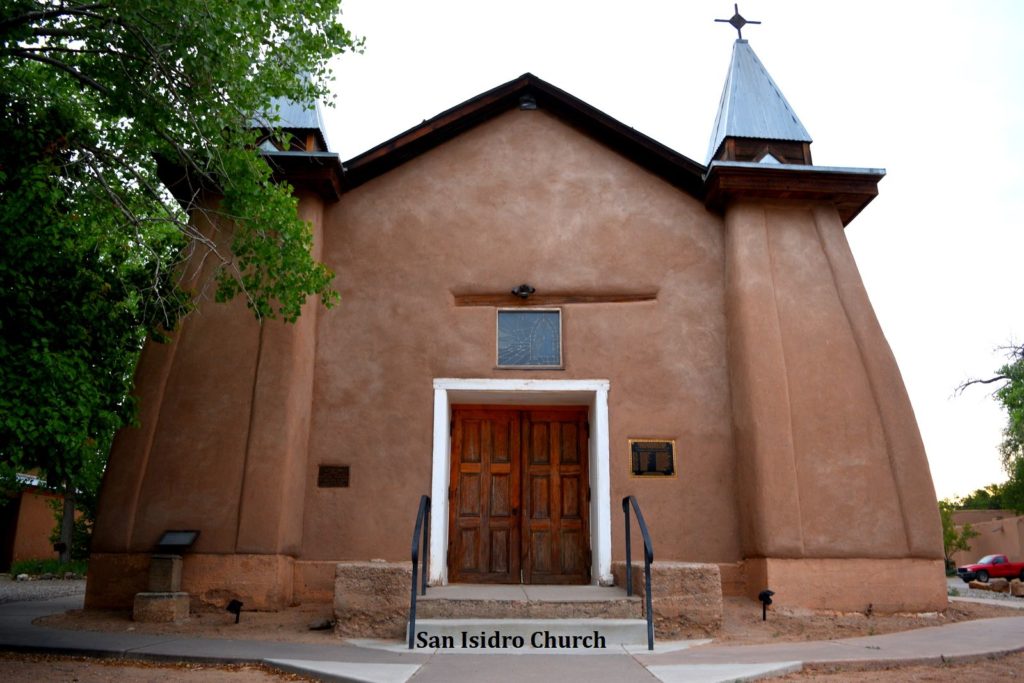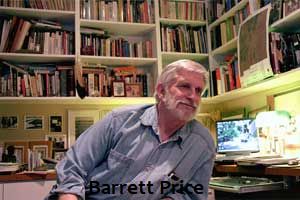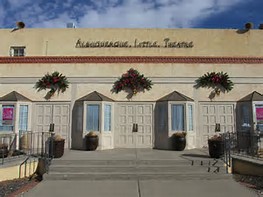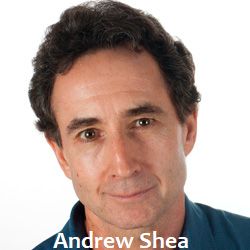In May of 1982 someone had posted an ad from Broadcasting Magazine. The classical music radio station in Albuquerque, KHFM, was looking to hire a morning program host who would also be chief announcer. New Mexico! I’d seen it and loved it when, as a vacation in the summer of 1977, I had driven that far west, camping in my new VW van (a descendant of my cherished European one). I was enchanted by The Land of Enchantment. The dramatic vast spaces, the beautiful spacious skies, the purple mountain majesties, such a compelling contrast to the tight little island of Manhattan. I had yearned to live in New Mexico, but couldn’t think of how to do it.
This was the chance. No second thoughts. No doubts. I knew that they were bound to be impressed; I was a New York classical music radio host.
By then, Helga and I had split. I had been living alone in Manhattan, on East 46th Street in a tiny, expensive one-room apartment (rent of $475 a month or $1,465 in 2016). A ten-minute walk to NCN. And I’d fallen in love with Hannelore Rogers, a rare, lively, intelligent woman who’d done something rare—written me a fan letter. Classical d.j.s didn’t get them often. When I told her that I was going to look into the job, she was truly distressed. She loved New York, having lived there less than two years.
I applied. After hearing my air-check audition tape, KHFM invited me to come for an interview, paying for the flight and hotel room. I was offered the job at a much lower salary than I was earning at NCN—$32,000 a year (ca. $80,000 in 2015).* KHFM offered me $18,000 (ca. $45,000 in 2015). Of course, I knew that living costs in Albuquerque were radically lower than those in New York, but I didn’t think that that was enough, never letting on that living in New Mexico would have been my joy at any price. I asked for $22,000 ($55,000 in 2015). They thought it over. One day later we had an agreement.
*Above I pointed out that in 1977 at $27,000 a year the 2015 equivalent was $109,000. This reflects the constantly changing fluctuation of the dollar’s value in different years.
Hannelore had traveled with me. She was offered a job working for the same man who was one of two major owners of KHFM. Bill Weinrod, also the executive administrator of the New Mexico Symphony Orchestra. She was hired as marketing and development director, a new position at the Symphony, then undergoing expansion in an improving local economy. We moved into a small adobe-like house (i.e., it was made of cinder blocks but had a shape designed to look like a characteristic adobe house). We did not marry. Yet.
My final performance on NCN was on July 30th 1982.
There we go again. In and out. In and out. In and out. My 12 collective years at WNCN had been in small increments, about three years starting in 1959 (fired), about four years starting in 1967 (quit), about five years starting in 1976 (quit).
And during those final five, inevitably, there were changes in the NCN staff: Bob Adams, fired. Matt Edwards, quit. Larry Josephson, hired and fired. Jim Pinckney, hired. Bob Adams, rehired. Gordon Spencer, quit. Six realignments. Broadcasting.
Coming to think about it, I had few roots. Starting in childhood, relocating was a regular part of my history. No surprise that as an actor I wasn’t sure who I was (see above). By the time I left WNCN I’d moved from 17 homes.

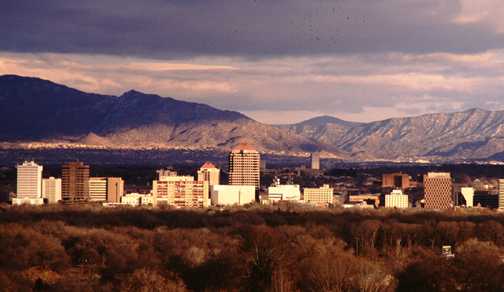
There’s no question that shifting from New York to Albuquerque seemed like a radical change. A welcome one. Plenty of gorgeous sky rarely impeded by tall buildings. To the east there were unobstructed views of the glorious Sandia Mountains, glowing deep violet in the evening. The air felt fresh. And traffic noise, such as I heard constantly outside the midtown Manhattan apartment I’d just left, was minimal.
I’d often wanted out of New York ever since returning seven years before. Not that I’d not had a great life there then, but always earnestly, constantly yearning to be closer to nature and away from the inevitable pressures endemic to New York.
As for being a performer, I thoroughly enjoyed having programs on WBAI and producing jazz shows for Italian radio. But, on a day-to-day basis, most of the time I was just making the best of the WNCN full-time position. Making the best wasn’t enough.
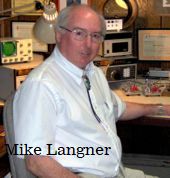
Thus, when interviewed for KHFM, I told Bill Weinrod and station manager Mike Langner that I wanted to be able to do my own programming for the morning show.
We discussed the obvious limitations, e.g., no difficult modern music. No non-classical music. But it was OK, for example, to present some singing. They agreed.
Two layers of freedom. Magnificent.
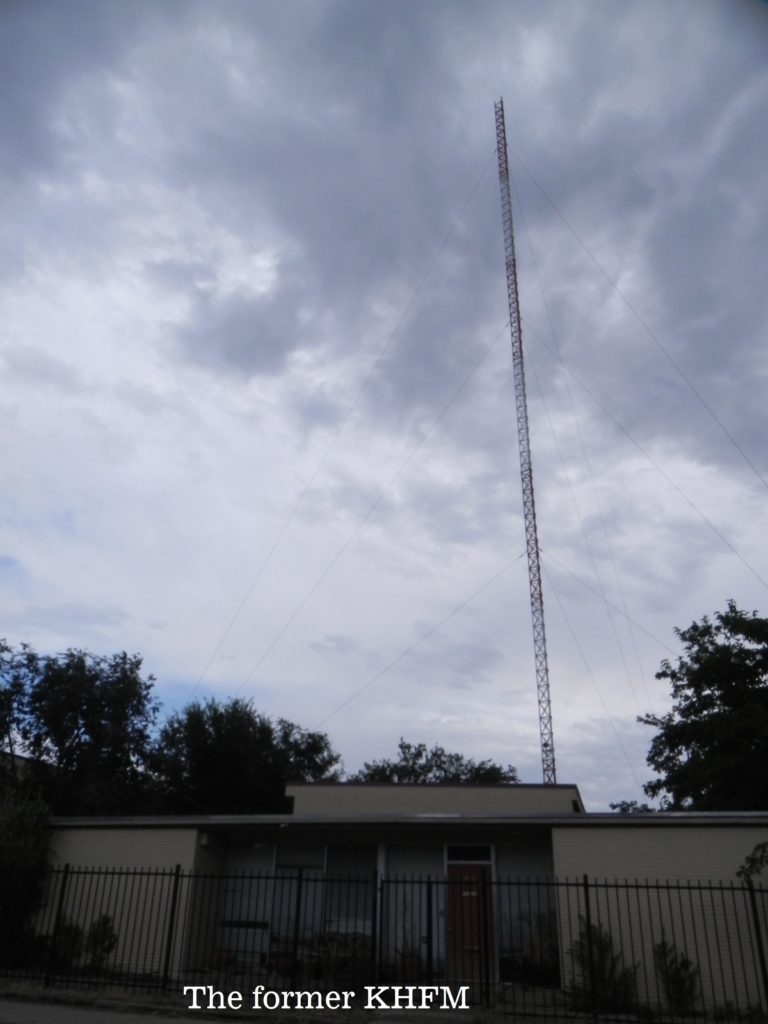
The station was a self-contained one-story cinder block building, on a small side street, the transmitter tower looming above and behind it. 5900 Domingo Road. (Incidentally, in 2015, a drive-by revealed that the building had become a private home. With the tower still standing. KHFM had become part of multi-station ownership at 4125 Carlisle Boulevard sharing the space with, as far as I could tell, three other stations.)
On the first day walking into 1982 KHFM, I’d brought an umbrella; the skies suggested rain. The receptionist, Shirley Davis, laughing, found it funny because, she said, it never seriously rained there.
Shirley’s desk in the reception area faced large plate glass windows looking out to the unassuming street with its modest ranch style houses and a few scruffy trees. The on-air studio, just off that, had a window looking out to a sandy, stony yard on a small street perpendicular to Domingo Road. Offices were on two sides of the building, between which was an open space with more stones and sand. The only other special feature of the building was a dusty back room with wooden shelves holding a major array of tubes, dusty discarded turntables, miles of electrical cords and cables, and other equipment about which I knew little. An echo of 1959 NCN at the top of The Pierre hotel, especially given that Mike’s major background was as a broadcast engineer just as had been Dave Passell’s.
Charlie Maldonado was the program director. Given that Bill and Mike had agreed to programming freedom, I had been told to check with Charlie if some choices might be questionable. I rarely consulted him. Neither he nor Mike were likely to question Bill’s decisions. Probably they wouldn’t dare; he was a co-owner. Life in that part of New Mexico seemed to lack the tension and competitiveness of back east. Easy-going.
My show aired from 5 a.m. to 9 a.m. I had to arrive by 4:30 to turn on the transmitter and prepare a wire-copy newscast. A throw-back of 27 years to WFLN. Given the size of Albuquerque and environs it wasn’t necessary to have traffic reports. KOB’s morning-drive and afternoon-drive pop music shows covered that.
My last newscast was at 9:00 a.m. And most Monday mornings members of the staff were laughing loudly outside the not-well-sound-proofed studio door. They weren’t guffawing over international disasters or tragic current events. They were at the weekly staff meetings. Early on, I mentioned the problem to Mike. Characteristically he said that he would take care of it. Note the word “would.” It was equal to another phrase: “Yes. We could do that.” Implication: it’s not urgent and worth thinking about. Quasi-italiano. Soon I tried to take care of it myself by stuffing a crumpled newspaper under the door. It made no difference. Eventually, after repeated requests, Mike added some thick felt to the bottom of the door. It made no difference either.
As in the past at WNCN and WBAI, my show was about the music not about me. Programming choices covered all periods from Renaissance to modern, as long as they were accessible. Parts of ballet scores. Symphony movements (provided they were scherzos, or nocturnes, or not something marked allegro or adagio, etc.; that was my own musicological fastidiousness). Piano pieces. String quartet movements. Guitar pieces. Choral works. Symphonic movie music. Art songs, primarily featuring baritones, although when on occasion presenting a woman singing I’d issue a “soprano alert,” tapping a lamp, just as I had done for NCN’s classical hits. I loved every minute. Oddly, there were few listener complaints.
Certainly my music choices were quite varied and unconventional as compared to, say QXR’s and NCN’s. More than once, Sales Manager Roxanne Allen would mention her concerns during management meetings. She said she could have trouble with sponsors if they heard something they didn’t like. Not that she ever mentioned specific examples where someone declined to advertise with us due to the music. In any case, neither Mike nor Charlie ever suggested that I program differently.
I tried not to talk too much or too long, a carry-over from NCN and QXR. And rarely spoke about myself. However, there were occasional short conversations with unusual studio visitors whom I made up and personified with character voices. Bill, Mike, and Charlie had no problem with that. The prized New Yorker had almost carte blanche.
Thus I exchanged niceties with motherly Cockney cleaning lady Flora. Was halted in my tracks by an Italian couple disagreeing about the weather, in Italian, untranslated. Texan Merle Noir (merle noir in French means blackbird) would stop by to deliver dairy products. There was commentary about the music by stuttering, happily enthusiastic Clove Parnes, whose speaking style was inspired by my encounters with Clive Barnes at WQXR. And there were fake ski reports by Jean-Claude Silly.
Once Jean-Claude reported on the ski area in Los Alamos. There was a real one called Pajarito, but in the 1980s it seemed to be out-of-the-way and under-publicized. In fact, it was known then to have very few lifts. This suggested that visitors were discouraged and that the area was primarily for residents. Or as if it were top secret, Los Alamos being principally a government town, famed for work on atomic bombs.
Jean-Claude said that he had trouble finding the ski area because there were no signs pointing the way and street names were almost non-existent. Those he could find seemed to be numbered in code. And when he asked people for directions, they whispered unintelligibly. He thought that he’d found it near a statue of J. Robert Oppenheimer wearing dark glasses and pointing toward the sky. But it turned out that that was at a trash dump full of shredded paper. Finally, J-C. was invited into someone’s house, after he had signed a three-page document vowing secrecy. And, as he looked out of the occupants’ plate glass window, he could see a bunch of children skiing. He was told that that was the place he was looking for. This may seem like a lot of talk, but he gave this report in installments one February morning. Listener response: none. Not even from Los Alamos.
Having to be on duty only four-and-a-half hours, I sometimes had the freedom to use the recording studio wherein I created short comic productions, each no longer than about three minutes. One item was A James K. Polk Portrait, a send-up of Aaron Copland’s Lincoln Portrait. My version set to music by Jerome Moross from the movie The Big Country.
“James K. Polk was the 11th President of the United States of America. Born November 2, 1795, in a log cabin in North Carolina. And this is what he said, this is what James K. Polk said: ‘Don’t light a match mother or the house will burn down.’ James K. Polk studied the law at age 23 in a Nashville office. And this is what he said, this is what James K. Polk said: ‘I must have a pen. This pencil is broken.’ James K. Polk stood five feet two inches in his stocking feet. And this is what he said, this is what James K. Polk said: ‘Sarah, where are my shoes?’ James K. Polk never carried a pistol in the White House. And this is what he said, this is what James K. Polk said: ‘My servant George always carries my gun.’”
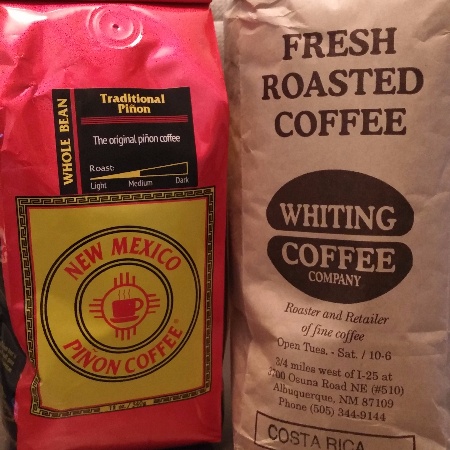
There was a report from Vienna by investigative reporter Herbert von Holznagel, who, speaking with a German accent, reported on a recently unearthed tool shed once used by Beethoven. Herbert rattled around all the clinking objects in the station’s back room discovered fascinating things, such as a piece of parchment covered with ink blots which looked like a trail of blood or maybe they were blood which looked like ink blots, an unfinished sausage sandwich on seeded rye where the mustard had dried out, and many pounds of ground coffee which he touched to get a sound like rustling straw. The last item was a send-up of what was actually in the station’s back room. KHFM had a trade deal with coffee roaster/seller Norman Whiting, which meant for one daily no-cost commercial the station got one free bag of coffee. Shirley would go once a week to Norman’s and come back with seven bags. She stored them in the uninsulated back room. The coffee dried out under the southwest sun’s heat in about 10 minutes.
Once I created a fake radio commercial touting a film called Oberheim (the name of an electronic audio synthesizer). In it a kid, Bobby, was passionately in love with his computer. In the 1980s it was already possible to own a personal one. Bobby didn’t want to leave his bedroom; the computer was jealous of any other relationships and spoke with Bobby with a whiny, high-pitched voice. “Starring Richard Burton as a talking fireplace.” Here I dubbed in Burton saying “…they do hear some sub-human monster yowling at him from inside,” dialogue from an LP promoting the movie Who’s Afraid of Virginia Woolf?
Obviously I was having fun. I recall few listener responses. Except once Mike took issue over my fake interview with a dopey basketball player who, I said, was from New Mexico A & M. The 6 foot 11 player was trying to figure out how many points he scored in the last game and couldn’t do the math. Mike said I shouldn’t have insulted A & M that way. But there was no A & M. Turned out that there used to be, many years before; but the name had been changed in 1960 to New Mexico State. Obviously some people remembered the bygone name.
As chief announcer I had few duties other than to sometimes find replacements for on-air shifts by calling a few volunteers we had. I did train everyone to frequently mention the call letters as we had done at WNCN. Plus I wanted them to talk a little about the music, suggesting they quote or use a sentence or two for the liner notes. Dave Fisher, a volunteer program host, a kindly local auto repair mechanic who loved music and had some understanding of it, had trouble with that idea. Probably he was not comfortable having to ad-lib. He demurred, saying “I thought that the music was the most important thing,” meaning to let the music speak for itself. To which I countered, “Right. But it’s not the only important thing. And talking about it shows how important it is.” He struggled for a while trying to do it right. I never criticized; he got better in time.
Mike eventually brought in a young woman, almost a girl, named Suzanne Bernadette. She had been a member of the congregation at Hoffmantown Baptist Church, and that’s where they’d met. Evidently he thought that it would be good to have someone so young on the air. Suzanne always sounded innocent when announcing. However, I lamented to him one day that I couldn’t get her to stop deleting slow middle movements from some Baroque concertos—she claiming that doing so kept everything more lively. That maybe she would listen to him and correct the practice. He replied that he thought that was a clever idea. I also tried to change something else she did: constantly promoting the next piece to follow a commercial break “after I return.” I pointed out that the commercials were part of the program as much as she was. Mike saw nothing wrong with that either. She was his protégé, I guess, and she could do no wrong.
This is one of several times in those years when I expressed perhaps unwelcome opinions to Mike. Perhaps they seemed as if I was being critical. Maybe I couldn’t disguise my underlying attitude. Having been a New Yorker for the previous seven years or so, I was trying my best to seem accommodating and less impulsive. I’m sure that over time, I got better at it, but being outspoken was most likely too direct for New Mexico culture. I tried applying Italy-learned ways of being indirect, but don’t think I always succeeded.
My attitude toward Mike probably showed. I had trouble with his too-easy agreeability with everyone and everything. He didn’t conform to my conception of station management.
In time I learned that his major qualification for running the station was due to an incredible ability to come up with solutions to technical and engineering problems; he often invented unconventional, inexpensive fixes, a sort of duct-tape approach. It turned out that he was known all over New Mexico radio for such special talents.
He told a story about himself, having been called by an engineer at KRST to try to solve a transmitter problem. The engineer told Mike that a switch repeatedly kept getting stuck and that the engineer had tried everything he could think of. But despite considerable knowledge and skill, nothing corrected the problem. “Mike,” he said, “I know this won’t make sense, but, could I hold up the phone near the transmitter for you to say something? Maybe just hearing your voice would make it work.” Mike thought the idea was funny, but having understood the details of the problem, he replied, “Well, it’s worth a try. Move the switch down and up again.” The engineer did so. It worked.
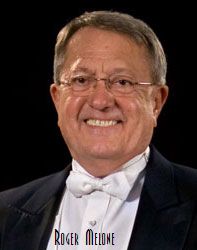
The on-air staff included gentle, unassuming, sweet Don Hoyt, who, being bald and chubby, seemed much older than I, but probably wasn’t. Don loved classical music and knew a lot about it. He was also a member of Roger Melone’s New Mexico Symphony Orchestra Chorus. Don had one “defect.” Living alone as he did, he must not have taken good care of his clothes. He often smelled as if they needed a thorough washing. The effect seemed to be the reason that at choral concerts people seemed to never stand directly next to him, as if leaving spaces on either side.
KHFM had a Saturday night jazz show from 11 p.m. to 1 a.m. hosted by young volunteer Rick Fletcher. Every so often, I’d listen to hear how he was doing it. After a few months, I noticed that he regularly would give obviously wrong information, such as who the soloists or what the titles of the music were.
One evening he aired what sounded like Billie Holiday at a studio rehearsal. She talked to the musicians, made suggestions, ran over a few bars. It was more talk than music. But worse, she seemed off-mike; the sound was execrable. Rick let it play for half an hour. I couldn’t figure out why he didn’t notice how bad it was and let it run so long.
I asked Don Hoyt about Rick, since they had known each other for a long time. They also had a mutual friend named Marsha. Evidently Rick was having an affair with her. She was married and in the NMSO Chorus. She and Rick apparently had telephone liaisons during the jazz show. Moreover, I learned that Rick always appreciated listener calls while he was on the air and encouraged them.
Being chief announcer I asked him to meet me to discuss what I thought was wrong with his performance, telling him that he had to pay more attention to what he was broadcasting, citing some of his obvious errors with information. He said he would try to do better. But for the next couple of months nothing changed.
Mike Langner agreed that Rick wasn’t very good at hosting the show, but didn’t want us to stop broadcasting jazz. So I told him that I would take over the program, although that was not the reason for my wanting Rick to leave. It was not an ideal choice; it meant having to give up late Saturday evenings, despite my love of that music. Even with initial reluctance, the re-connection with jazz was great.
Soon I also noticed that on many of the station’s LPs there were tiny little numbers in pen next to some of the track listings. They were dates. Bill Weinrod not long thereafter told me that he used to play those records when he had the jazz program. He’d given it up to have more free time. He wrote the dates so as to make sure he didn’t play the same selections too often and too soon.
Weekdays at 9:05 a.m., after my newscast, we aired a nationally highly popular syndicated program Adventures in Good Music, hosted by genial Karl Haas. We had started carrying it on WNCN in 1970.
Some NCN listeners and staff had felt that it was too simplistic and that Haas talked down to audiences. Certainly it didn’t appeal to some musically more sophisticated people. Bill Weinrod felt that way, too. But he didn’t want to interfere with KHFM programming. As a spot-commercial carrier it was as successful as anything else on the station. Personally, I felt that New Mexico was more fertile ground for Haas’s concept, presumably being less discriminating than New Yorkers. Not that I listened to those broadcasts that time around either. Yet, at that stage of my maturity, I was more accepting.
We hosted one of his concert/lectures in November 1985. That weekend he came to the studios to record one of his broadcasts, beginning by choosing some of our LPs to use. Clearly he didn’t need a script. Then he went into the recording studio where Cindy Abrams produced the program for him. Cindy later told me that Haas had placed a clammy hand on one of her legs, but that she gently removed it and that was that. He was about 72. She in her early 30s.
I also used the recording studio to produce and tape my jazz shows for RAI, those I had started in New York, then called Jazz da New York, renamed Jazz con Gordon. Although I was well-paid, I tried to save money by not buying new tape, and took some I found on shelves in several places, including the back room. Since many reels were not full, I’d splice together what I needed. Some already had splices. Not all of the tape was the same brand or of the same formula, or of identical colors, but I didn’t know that much about tapes and had thought that they were all the same. Which is to say that, in trying to save money, I was probably producing programs whose sound quality was not the best or uniform, especially if some of what I used had been stored in KHFM’s hot, uninsulated back room.
In any case, about a year after I had been sending my KHFM-produced shows to New York, RAI’s Carla Verdacci contacted me to say that they decided to drop the program, especially since I was no longer in New York. Some years later, I became convinced that the sound of the tapes themselves was not consistently of the best quality and that that was the reason for dropping the show.
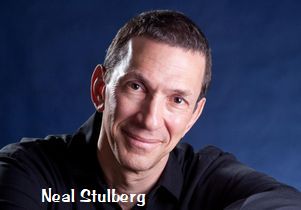
Of course, KHFM, Albuquerque’s only classical music station, had a strong connection to the New Mexico Symphony Orchestra. No surprise either, given that Bill Weinrod was a major station owner as well as executive administrator of the Symphony. This meant that we carried promotional programs featuring interviews with visiting conductors and soloists, along with other features, such as those with Music Director Neal Stulberg as host. Plus commercials. Written by Hannelore. Announced and produced by me. In the same recording studio. Later, even after I’d been fired (see below), I still used the studio for such productions.
Given the relationship with the NMSO, we attended all the concerts plus many social events, becoming friends especially with Bill and his wife Kate. We spent many times together in mutual homes hosting meals, or going to concerts, movies, and the theatre together. We also became close with Resident Conductor Roger Melone, as well as Neal Stulberg and his wife Leah Shamoon. We kept up regular contact all with of them for many years after moving away.
